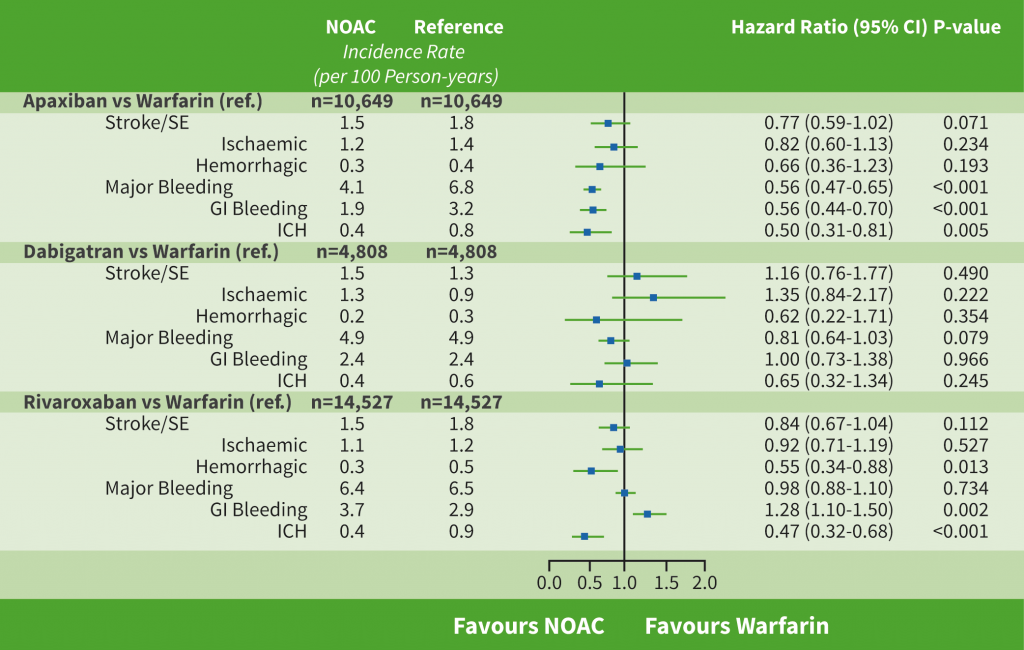Mishra et al. presented results of a retrospective observational analysis of claims data. The authors aimed to compare outcomes between the two types of stent in this very elderly population, using an American nationwide readmission database (2010-2014) to identify patients aged 80 years who had percutaneous coronary intervention (PCI) using DES or BMS based on international classification of disease codes (9th revision [ICD:9-CM]) [1]. Primary endpoints were 30-day readmission, in-hospital mortality, post-procedure complications, and cost of care. A total of 297,378 qualifying subjects were identified (30.7% BMS; 69.3% DES). Significantly less utilisation of DES was observed in nonagenarians vs octogenarians (56.75% vs 70.56%, P0.001).
DES recipients had lower burden of comorbidities than BMS recipients (Charlson comorbidity index 2: 55.48% vs 63.61%), as well as significantly lower rates of in-hospital mortality (2.93% vs 6.41%, P0.001), 30-day readmission (octogenarians: 15.04% vs 18.4%, P0.001; nonagenarians: 18.52% vs 20.56%, P0.001), post-procedural complications (10.3% vs 15.7%, P0.001), and cost of care (24.8 vs 25.1 thousand USD, P=0.013). On multivariate analysis, the use of DES was associated with significantly lower 30-day readmission rates, composite endpoint of post-procedural complications and mortality. Thus, it was concluded the use of DES is associated with superior outcomes to BMS in the very elderly population. Researchers pointed out that future studies are needed to identify the barriers responsible for DES underutilisation in this population.
1. Mishra A, et al. Abstract 1329-360. ACC 2019, 16-18 March, New Orleans, USA.
Posted on
Previous Article
« Smartwatch can detect atrial fibrillation with high degree of accuracy Next Article
Less bleeding and fewer hospitalisations with antithrombotic regimen with apixaban without aspirin »
« Smartwatch can detect atrial fibrillation with high degree of accuracy Next Article
Less bleeding and fewer hospitalisations with antithrombotic regimen with apixaban without aspirin »
Table of Contents: ACC 2019
Featured articles
Acute and Stable Ischaemic Heart Disease
Arrhythmias and Clinical Electrophysiology
Substantial impact of temporary interruptions of warfarin versus DOAC
Smartwatch can detect atrial fibrillation with high degree of accuracy
Congenital Heart Disease
Heart Failure and Cardiomyopathies
Frequent use of beta-blocker after HFpEF hospitalisations in elderly patients without compelling indications
High 5-year survival rates for older HF patients without initial severe comorbidity
Pulmonary Arterial Hypertension and Venous Thromboembolism
Interventional Cardiology
Vascular Medicine
Lower rates stroke/SE with DOACs in frail non-valvular AF patients
Similar rates of stroke/SE associated with DOAC vs warfarin use in obese non-valvular AF patients: Results from an observational registry
Convincing evidence of the role of icosapent in reducing subsequent CV events
© 2024 Medicom Medical Publishers. All rights reserved. Terms and Conditions | Privacy Policy


